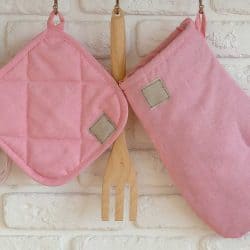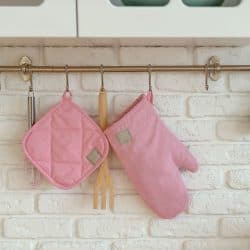Oven mitts are a vital tool in protecting fragile human skin from the high heat associated with cooking. But are they flammable? We've scoured through the research and have some surprising answers for you!
You can find oven gloves in a variety of materials, including fabric, silicone, and leather. They are each heat-resistant up to varying degrees. However, all oven mitts are flammable if exposed to open flame or long-term excessive heat.
So, which gloves are the safest? Is cotton suitable for oven mitts? What do the professionals like to use? Continue reading for some sizzling tips on choosing your perfect oven mitt!
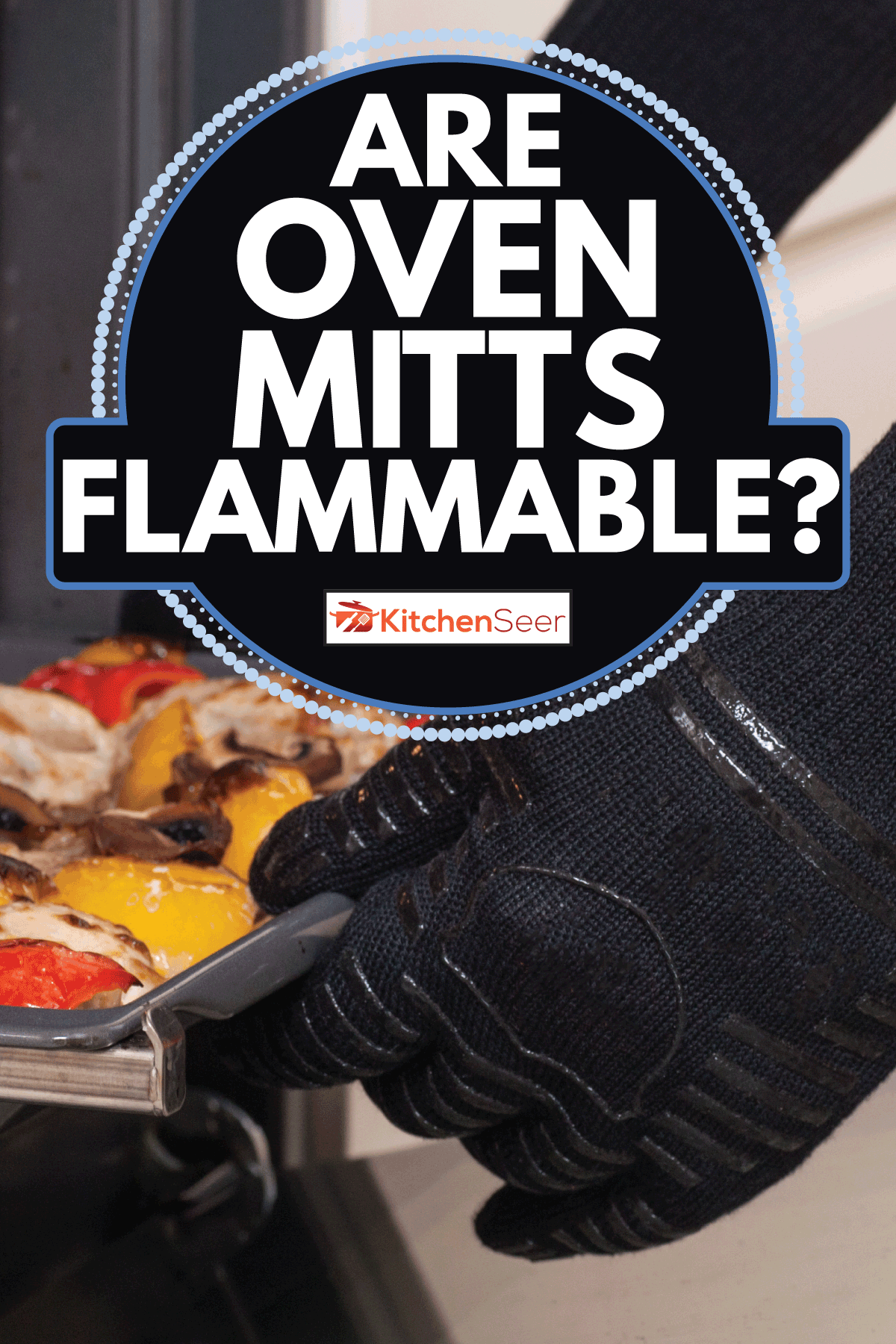
Are my oven mitts flammable?
According to the American Red Cross, cooking fires are the primary cause of house fires and related injuries. To combat this, it's essential to monitor kitchen activities closely and keep flammable objects away from heat sources. As we briefly touched on in our introduction, this includes oven mitts. They can absolutely catch on fire!
The rate at which this could occur largely depends on the composition of your gloves. For example, fabrics such as cotton and polyester will burn easily if left near a hot oven-eye. Neoprene, silicone, aramid, and leather are more flame-resistant. However, each of them will also burn if subjected to open flames or intense heat for too long.
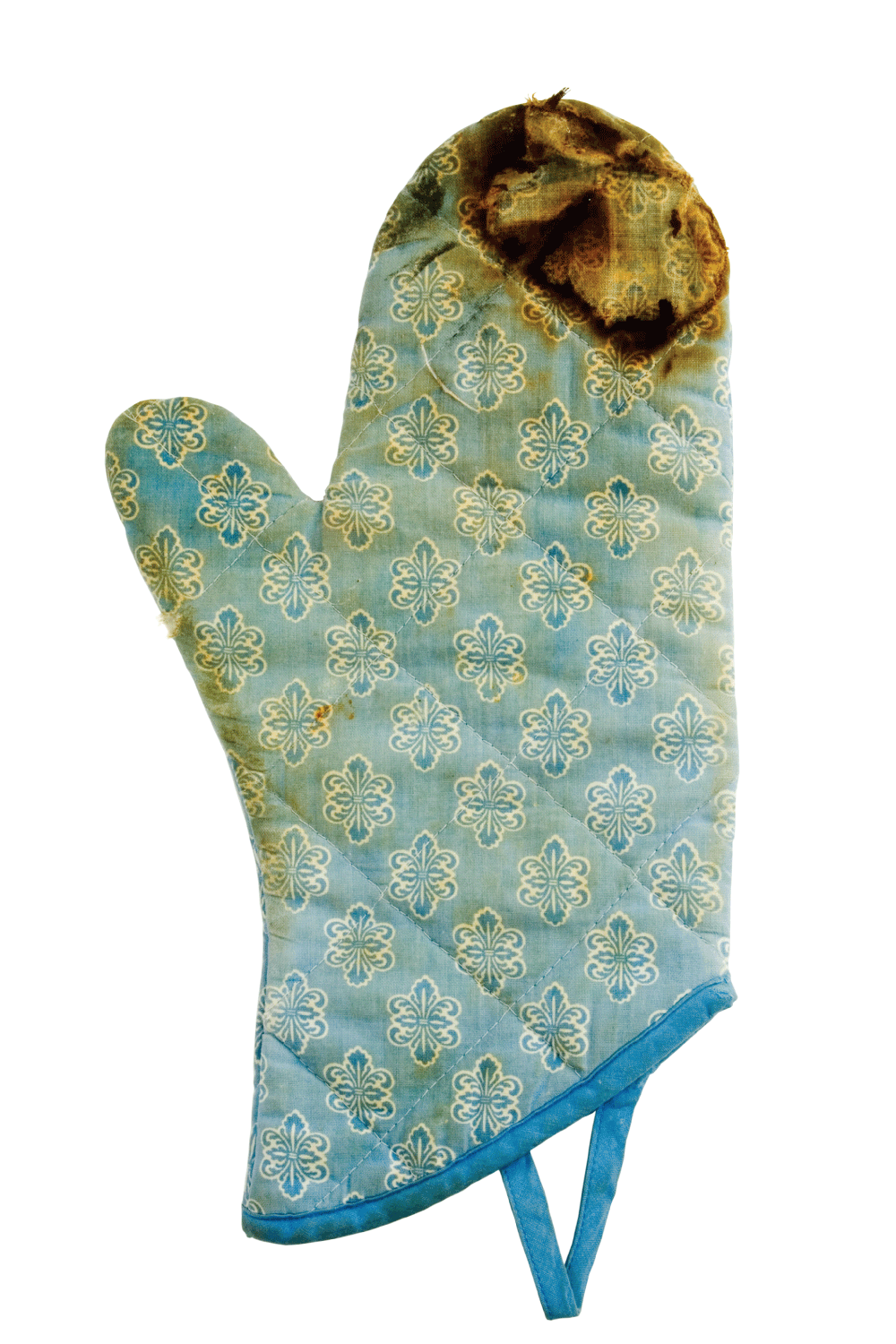
The only exception to this is aramid fiber. It will not burn or melt. But the other substances it is combined with in oven mitts can if the aramid is breached.
That being said, lined silicone, leather, and aramid gloves appear to be the least likely to openly burn out of the common materials used. Some of them are even designed to withstand the scorching work of welding and iron forging. Now that's hot!
Can silicone oven mitts catch on fire?
Silicone gloves are definitely included in the 'flammable' category. While they are more durable than fabric-based mitts, they'll also eventually catch fire if not watched. For instance, if left lying on a burner or grill that reaches over 500 degrees, silicone will burn and melt. If this occurs, it can also ruin your cookware or appliance in addition to the potential risk to your person.
What are oven mitts made of?
It can be confusing to pick a pair of oven gloves due to the sheer variety. Let's go over the most popular choices, along with their pros and cons!
Cotton & polyester
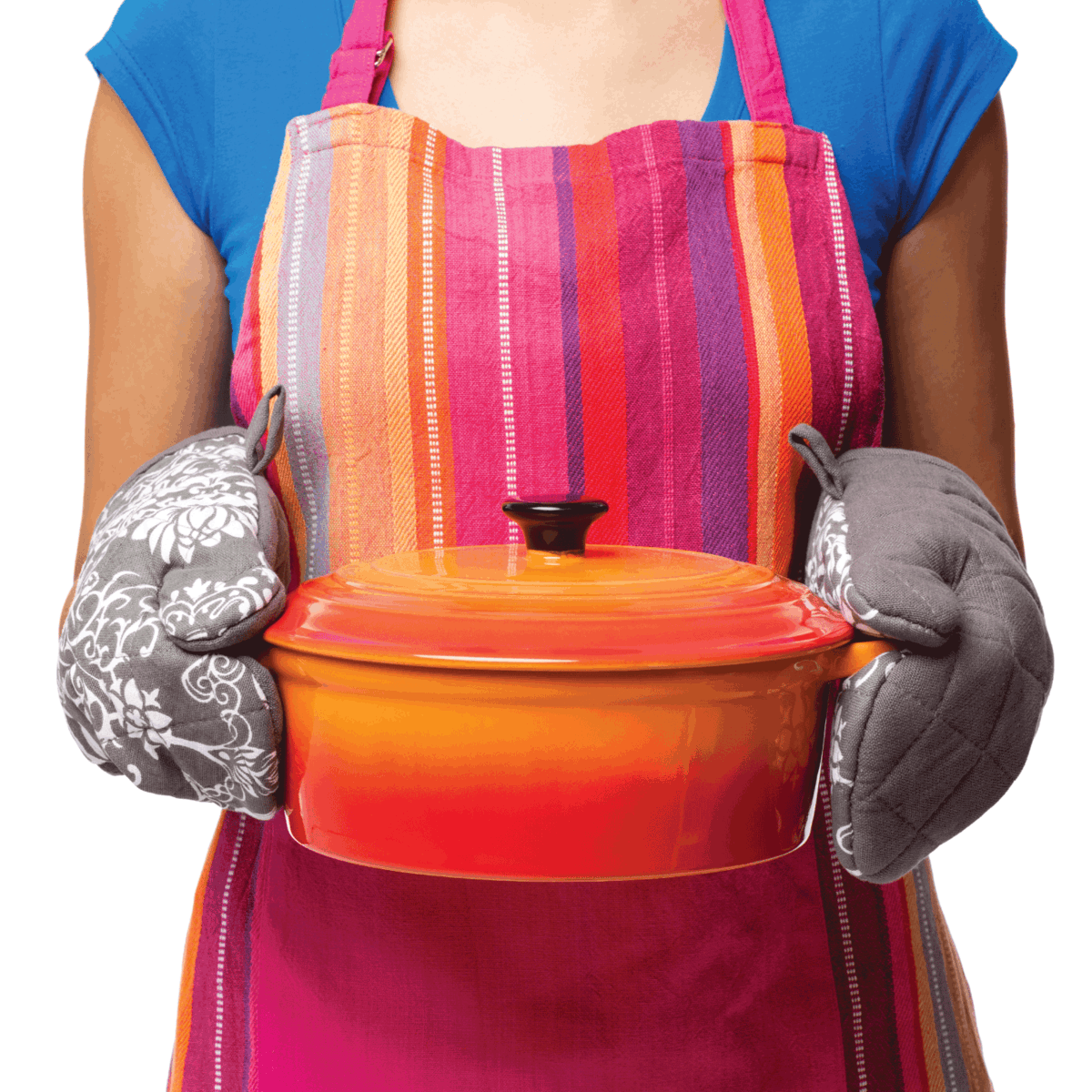
Fabric-based gloves are the most common mitts that you tend to see in the stores. They're typically made from cotton, polyester, or a combination of both. In this case, thicker is better for more protection.
Advantages:
- Cheap and available in decorative styles
- Comfortable to wear and allows better finger movement
- Offers basic heat-resistance
- Machine-washable
Disadvantages:
- Only heat-resistant up to 320-425 degrees (for cotton and polyester)
- Do not protect from scalding by hot liquids
- Will easily burn if left near a heat source
Click here to see Dutoue Cotton Oven Mitts on Amazon.
Silicone & neoprene
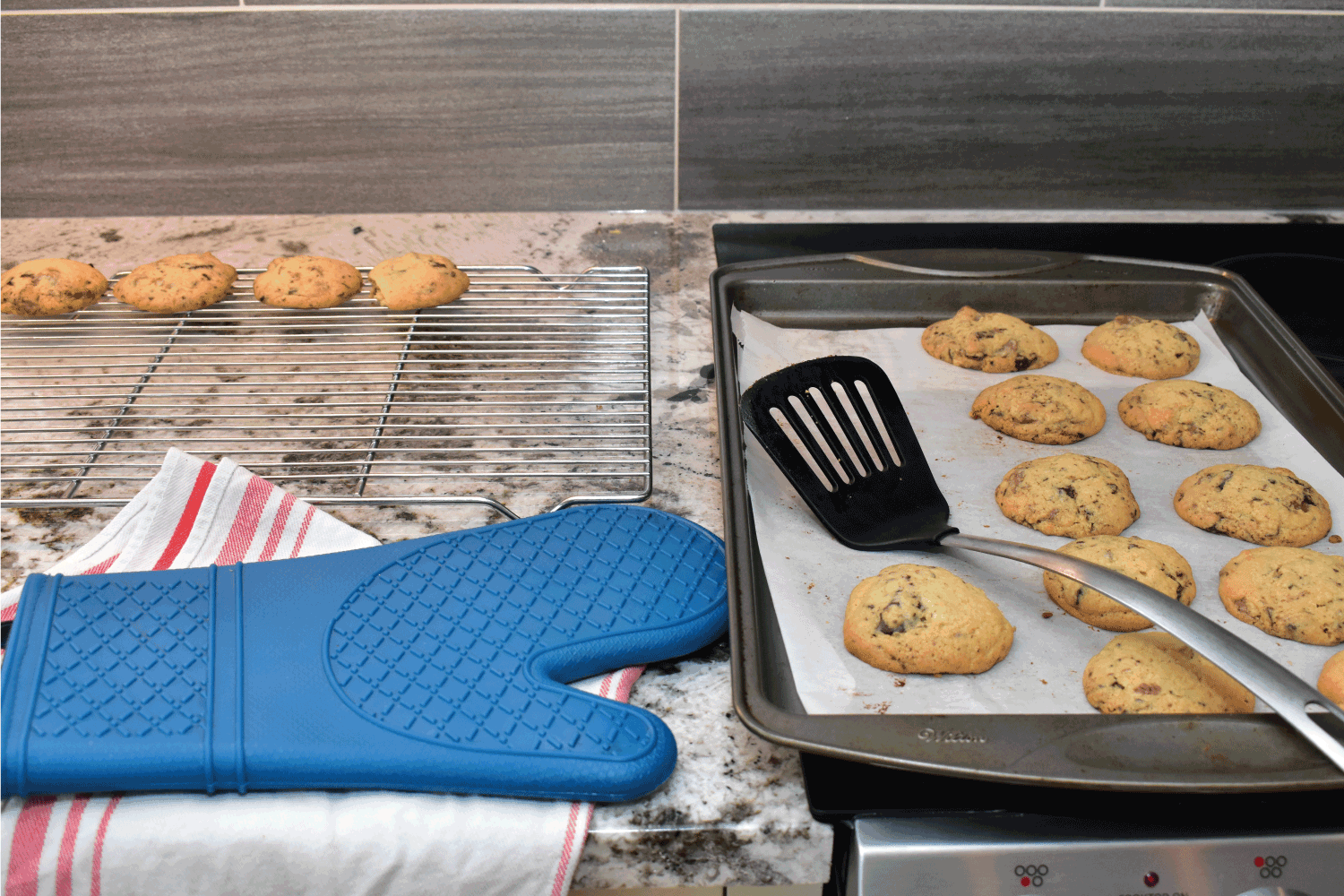
Silicone and neoprene oven mitts are extremely popular in the home-based culinary world. They can tolerate higher heat than cotton versions. Also, they're highly flame-retardant. For maximum efficacy, look for a glove with an inner lining of fabric.
Advantages:
- Effective against boiling liquids and steam due to waterproofing
- Heat and flame resistant up to 450-500 degrees
- Easy to wash in soapy water
- Textured grips offer a more secure hold on pots and pans
Disadvantages:
- Less mobility in fingers for precision work
- Not all brands have an inner lining to help absorb heat
- Available in less decorative designs than fabric
Click here to see 500F Silicone Oven Mitts on Amazon.
Leather
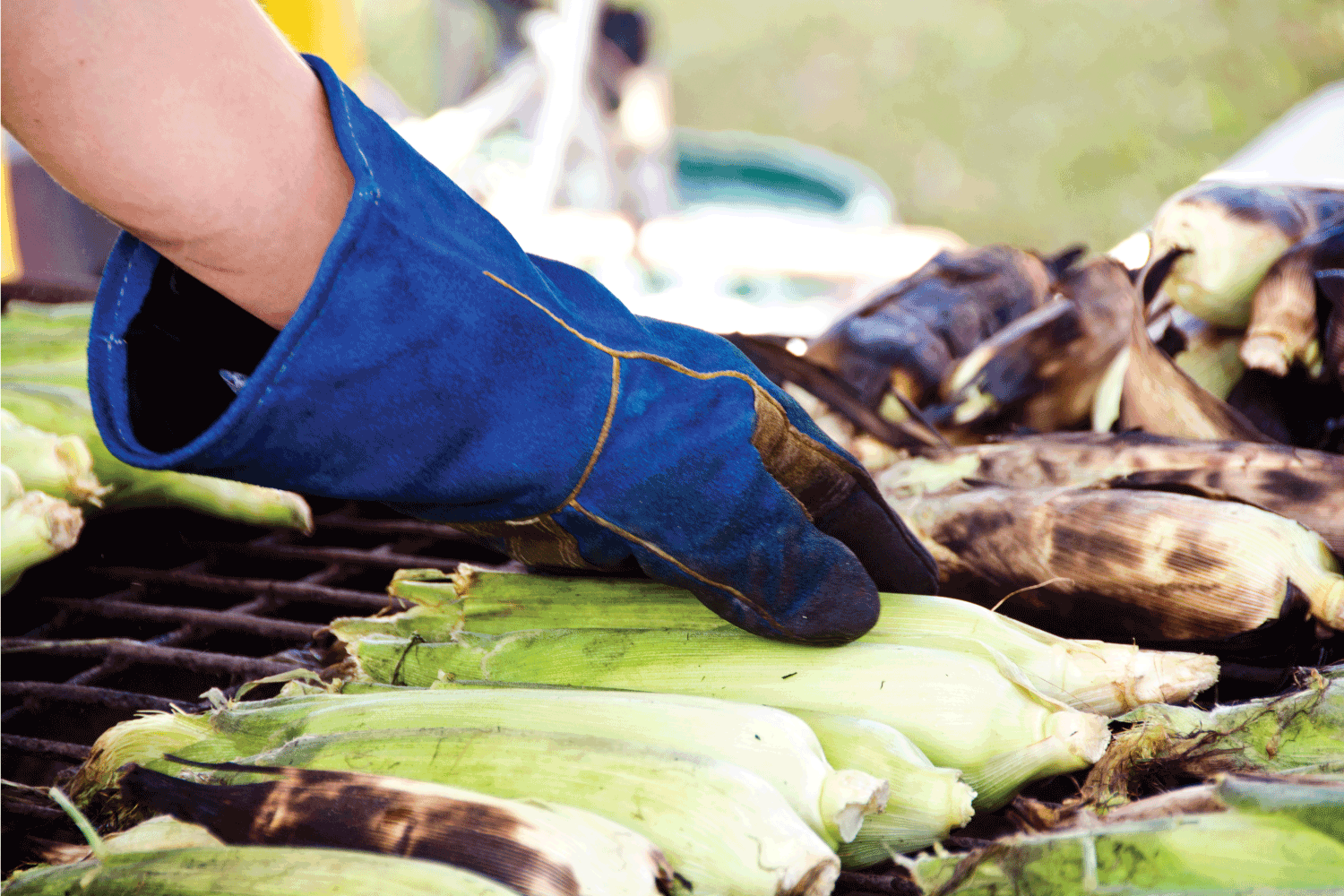
Leather is a favorite material amongst men that love to grill and smoke foods. They're quite impervious to flames. Plus, leather gloves are highly durable.
Advantages:
- Insulated models can be heat-resistant up to roughly 932 degrees
- Least likely to catch fire
- Flexible enough to easily use cooking utensils
- Long versions are available to protect more of the arm
- Tough and long-lasting
Disadvantages:
- More expensive than fabric or silicone variations
- Not machine-washable
- Strong smell
- Non-lined versions will only protect hands for a few seconds at a time
Click here to see Rapicca 16-Inch 932F Leather Gloves on Amazon.
Aramid
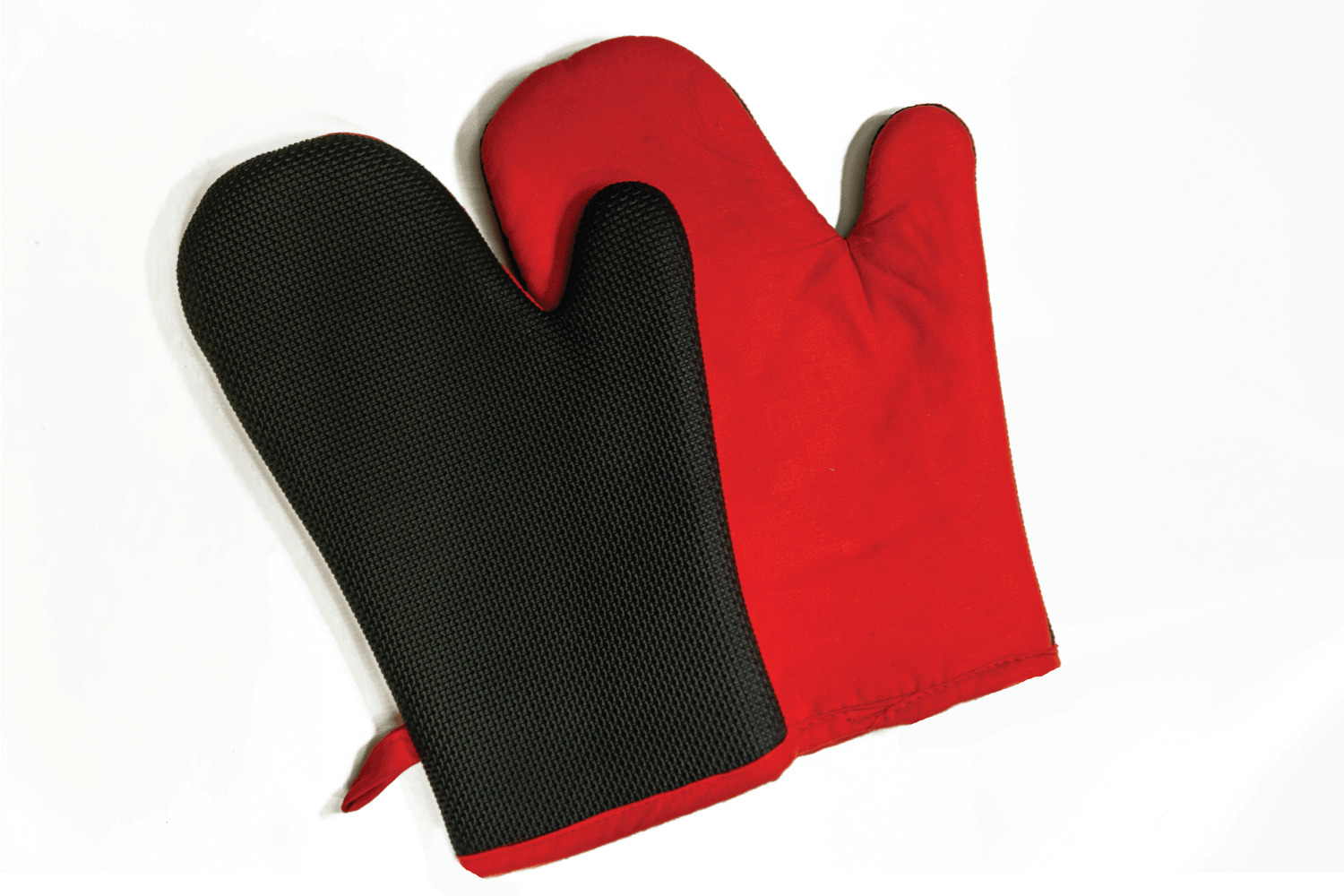
Aramid is a super-durable fiber similar to Kevlar. It's less known to home cooks, but it's a highly effective material for oven mitts.
Advantages:
- Excellent protection from burns
- Handles heat up to 1400 degrees
- Almost impossible to burn
- Thin but strong
Disadvantages:
- Hand-wash only
- More expensive than cotton or silicone
It's important to note something about aramid oven mitts. This particular fiber itself will not burn or melt. However, it is often blended with other components like cotton, cloth, and rubber when utilized in oven gloves. So, if the first layer of aramid is compromised or damaged, it becomes possible for the other materials in the glove to burn.
Click here to see Aramid Oven Mitts on Amazon.
Is cotton good for oven mitts?
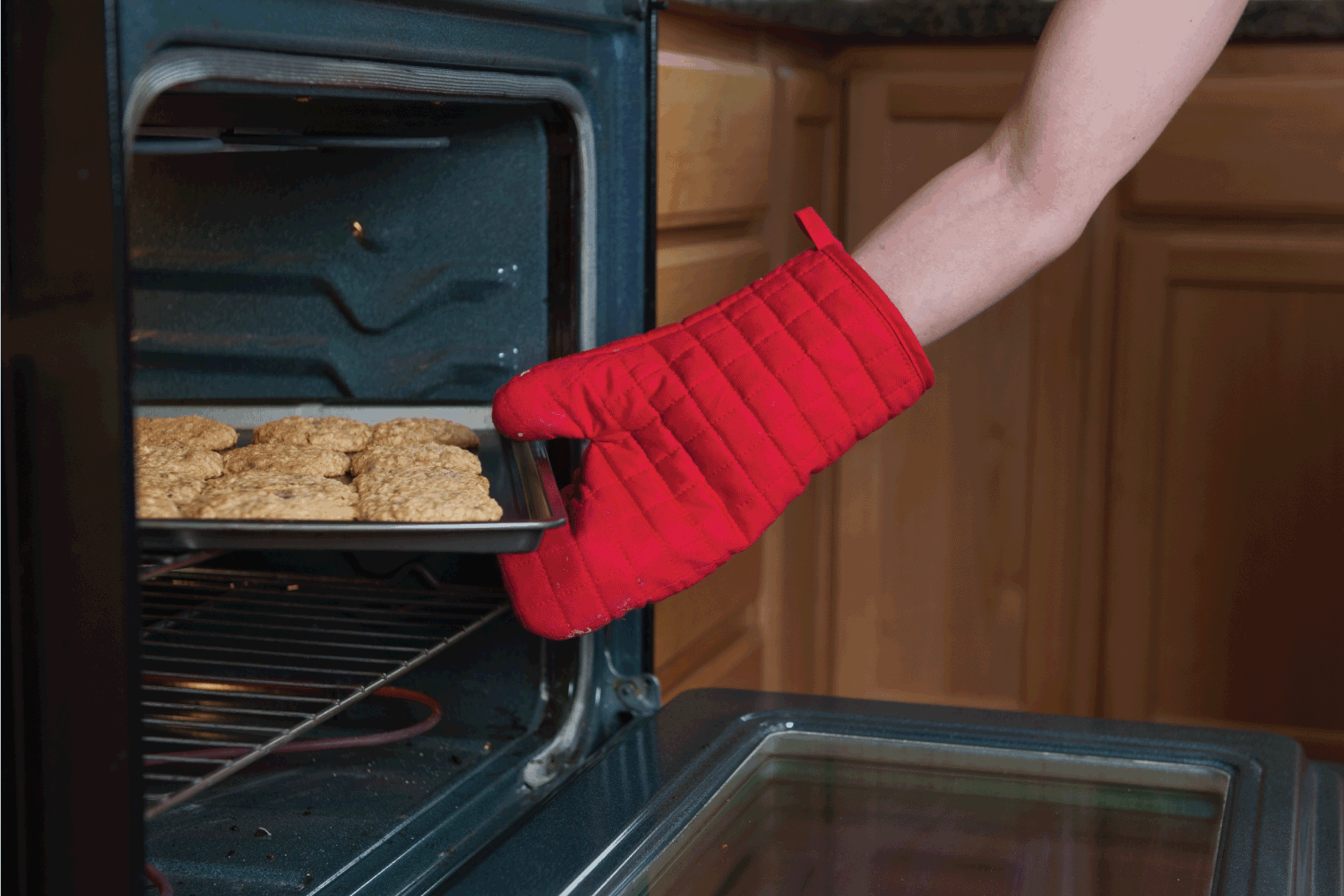
Cotton is quite literally the least heat-resistant material used for oven mitts. A thin, flat cotton glove offers very little protection. Not only that, it is highly flammable. Cotton, especially when blended with other fabrics, makes an effective inner layer. Try to look for silicone, neoprene, or leather combined with cotton lining for better results. It should not be the only material utilized if you want maximum skin protection.
Can you get by with pure cotton mitts? Sure. Lots of people do this. We're simply pointing out that there are safer options out there- especially if you cook a lot!
What oven mitts (or gloves) do professionals use?
![]()
Professionals use different oven gloves depending on the type of cooking they're doing. Each type has its pros and cons, as we previously covered. The best mitts are often a blend of multiple materials.
For example, many chefs choose one with a silicone exterior and cotton/polyester interior when working around hot liquids and steam. This is because they offer waterproofing and superior grip. Non-slip qualities are even more vital when dealing with liquids than solids.
Click here to see Geekhom Silicone Cooking Gloves on Amazon.
Click here to see Cuisinart Silicone Oven Mitts on Amazon.
Alternatively, it's also common to see leather or aramid variations in the professional culinary field. Those that deal with barbeque, smoking, bread-baking, and brick oven cooking often choose these because they can be exposed to direct flame more often.
Click here to see Grill Heat Aid Extreme 1472-Degree Gloves on Amazon.
Wrapping it up
Phew, this post made us sweat. Thankfully, our hands were protected at all times!
We established that the average oven mitt is, in fact, flammable. Cotton fabrics are the most prone to burning, followed by silicone and leather further down the chain. Finally, aramid is virtually flameproof as long as the structural integrity is kept intact.
Remember when choosing your gloves to consider the pros and cons listed for each type, as well as what you would be using them for. Silicone is especially great for wet cooking, while leather and aramid shine around open flames.
Now get out there and find your perfect pair of oven mitts!
14 Luxury BBQ Gift Ideas For The Man Who Has It All
33 Kitchen Gift Ideas For Moms Who Love To Cook









![Floral oven mitten on wooden table. 9 Types Of Oven Mitts [And How To Choose]](https://kitchenseer.com/wp-content/uploads/2021/06/Floral-oven-mitten-on-wooden-table.-9-Types-Of-Oven-Mitts-And-How-To-Choose-250x250.png)
